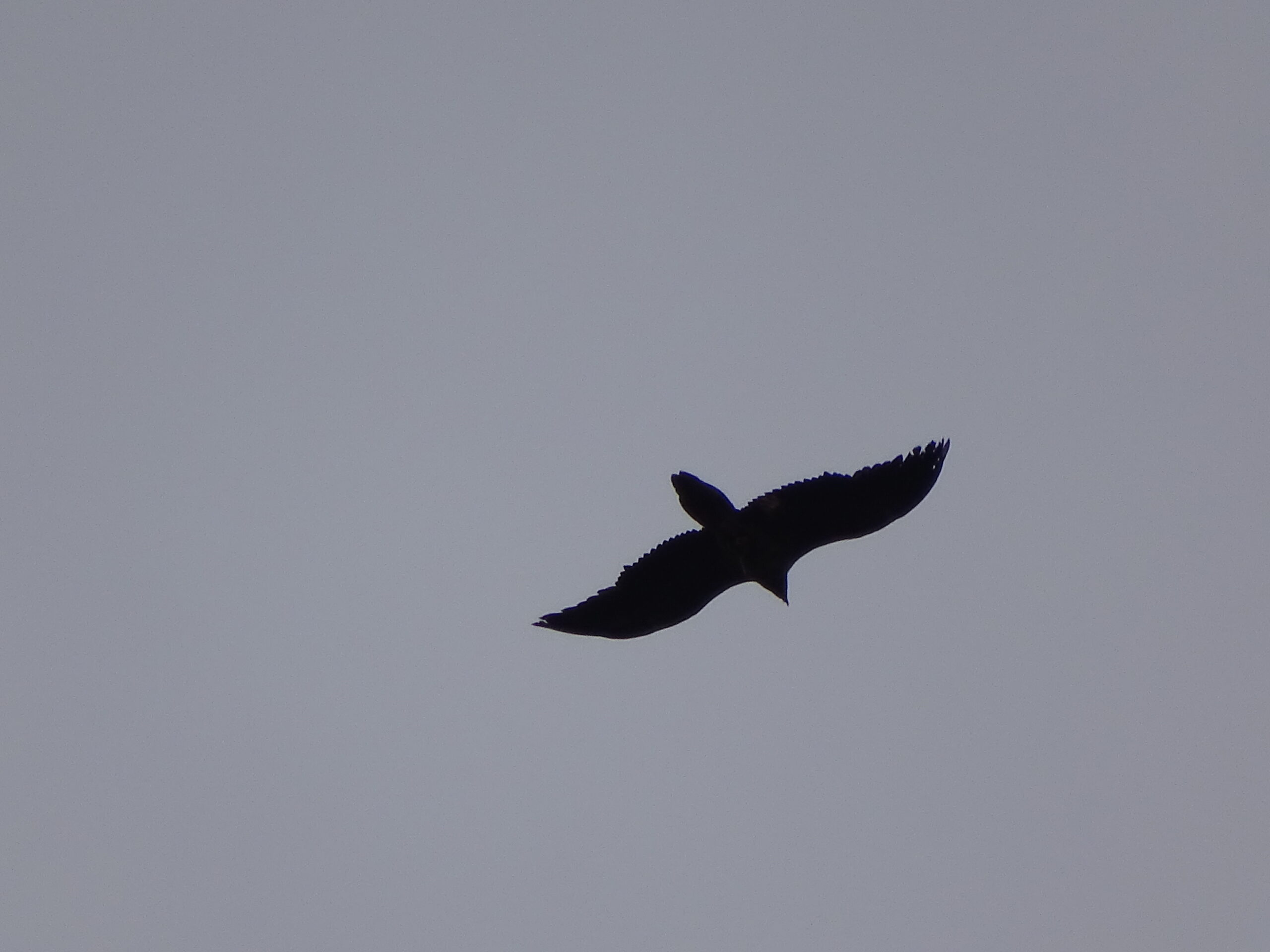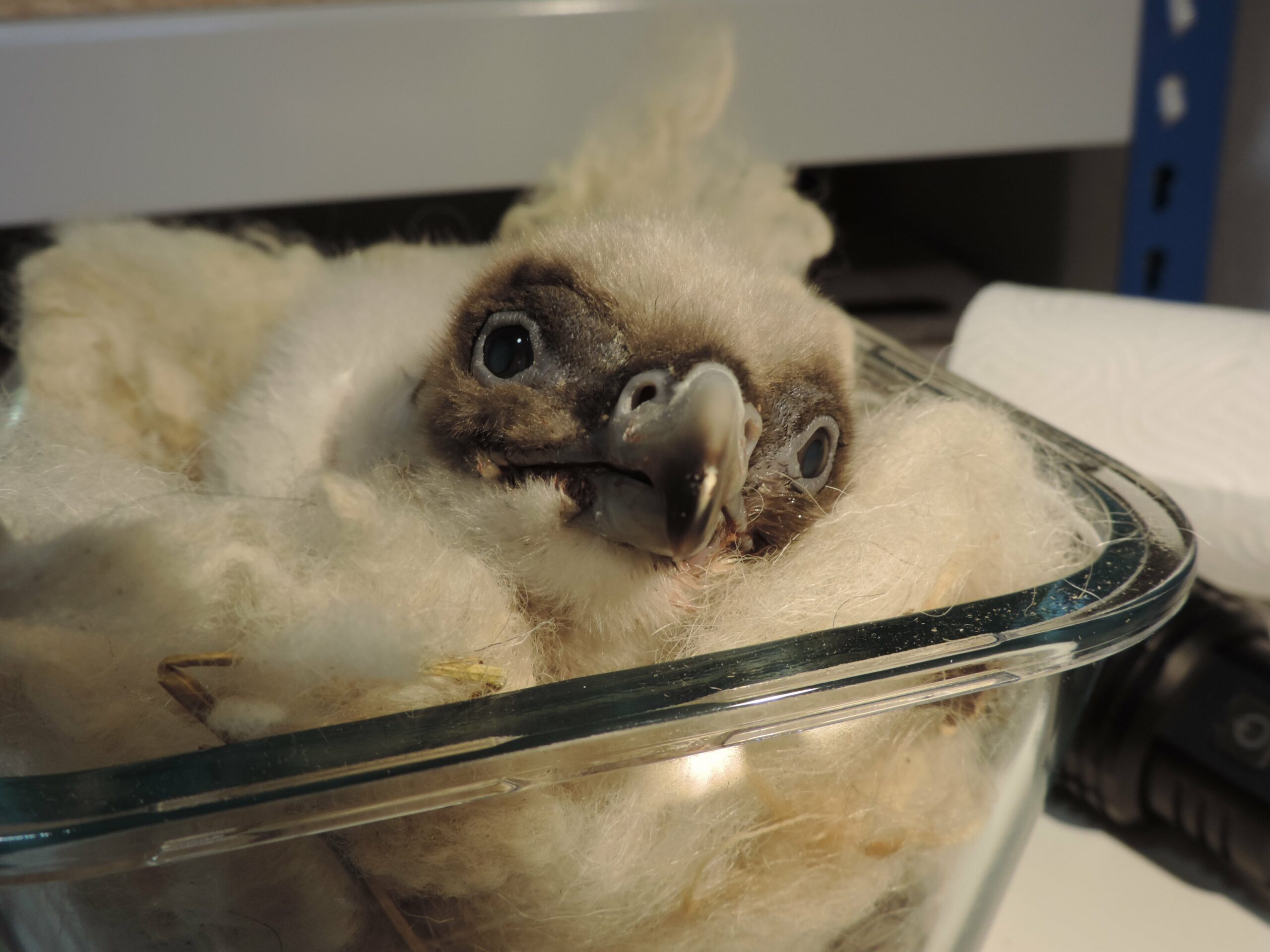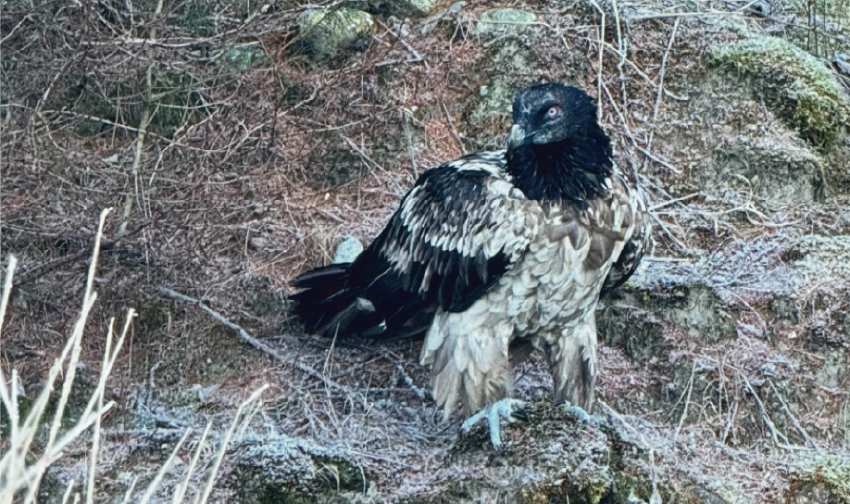
This year, the Vulture Conservation Foundation (VCF) and the Junta de Andalucía released eight young Bearded Vultures in the Andalusian wild on five different occasions as part of a reintroduction project in the region.
Releasing Llopis and Bernar
Bearded Vultures Llopis and Bernar hatched at the Bearded Vulture Captive Breeding Centre of Guadalentín (CCG) which specializes in double adoptions and breeds the most species in captivity within the VCF coordinated Bearded Vulture Captive Breeding Network (EEP). The VCF recently assumed the management of the Centre at the beginning of 2020 on a two-year contract from the Junta de Andalucía. The two chicks are named after two pioneers of Bearded Vulture conservation and the founders of Guadalentín, as a tribute to the Centre’s upcoming 25 year anniversary!
Ahead of their release, the young vultures were equipped with GPS tags to monitor their movements in the wild, which helps gather important information about their behaviour. On Thursday 7 July, it was time for the fifth and final release of the season in Andalusia. The team released Llopis and Bernar in the hacking site at Sierra de Castril Natural Park in Granada.
Release method
We release Bearded Vultures using the ‘hacking method’, which entails placing young birds at an artificial nest in suitable habitat to acclimatize to the natural environment before they take their first flights. The hacking method is more ore less like the “natural” way of fledging. The role of the parents at that time is the protection against predators, food supply and social contacts. This method substitutes these functions to a big part. The construction of the platform does not allow terrestrial predators to reach the birds, which prevents any possible injuries, the animal keepers provide food without any human contact, and socialization is possible since two or more nestlings are usually released together. Furthermore, we release the captive-bred birds at an average age of 90 days old, when the birds are able to eat alone, are strong enough to defend themselves against other birds of prey and are young enough to recognize the release site as their rearing place. This way, the nestlings are able to associate the place where they are released with the area of hatching so that when they reach breeding age, which is around 8-10 years old, they select these places to breed. When Bearded Vultures are young, they tend to travel vast distances and explore new regions, but once they become sexually mature, they tend to select areas close to where they hatched to breed.
Until the birds fledge, a team from the Junta de Andalucía is monitoring them from a safe distance to ensure their wellbeing and evaluate their development.
We hope the birds released this year will have a long future in the wild and become parents themselves in about ten years time!
Bearded Vulture reintroduction in Andalusia
Bearded Vultures went extinct in Andalusia in 1986 mainly due to direct persecution, wildlife poisoning and human disturbance at the nesting sites. To bring them back, Junta de Andalucía, and us here at the Vulture Conservation Foundation (VCF) started a reintroduction project in 1996, and the former Fundación Gypaetus was also created to manage the project. Since the first releases in 2006 and with the release of eight individuals this year, 71 Bearded Vultures have been released in Andalusia this year in the provinces of Jaén and Granada. Thanks to tackling threats and releasing birds, the population of the species is gradually increasing. There are currently three Bearded Vulture pairs and 43 confirmed individuals in Andalusia. Hopefully, the chicks that hatched in the wild this season will survive and also stay in the region.
Sign up to our newsletter and never miss any vulture news!





